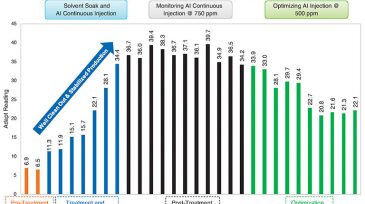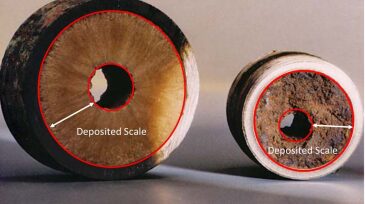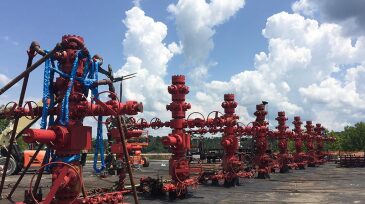Oilfield chemistry
This study compares water-based chemicals that can be used for enhancing the oil recovery of shale-oil reservoirs, including surfactants, nanoparticles, and ketones.
The experience captured in this paper illustrates the potential of deepwater riserless wireline subsea intervention capability and the fact that it can be expanded beyond hydraulic-only, simple mechanical, and plugging-and-abandonment scopes.
This paper presents a novel methodology for assessing the rapid mineral carbonation of carbon dioxide through geochemical interactions with carbon-, magnesium-, and iron-rich minerals abundant in geological formations.
-
The complete paper highlights examples of nonmetallic materials selection and qualification for upstream water-injection and producer and hydrocarbon wells and presents suggestions for future progress.
-
The complete paper discusses the importance of adequate preparation and the approaches used to overcome challenges of EOR operations, including handling back-produced polymer.
-
Researchers use novel methodology to measure the thermo-electric properties of native crude.
-
Approved in October, the Flow Measurement Technical Section will help engage the greater SPE technical community in flow-measurement-related issues and technologies. It will cover the full spectrum of flow measurement, including single-phase and multiphase flow.
-
DuPont Microbial Control research scientist and “microbial detective” Geert van der Kraan shares the clues that microbial life leaves behind to help make the extraction process cleaner in a recent TED Talk.
-
Scaling buildup inside wellbores is a serious production problem that dramatically reduces the well productivity index. This issue has a significant cost across the industry, mostly associated with loss of production or additional operations such as well intervention.
-
SponsoredMany oilfield applications involve use of slurries. But sedimentation of the additives that started out as powders can create problems and reduce effectiveness. A new easy to use, liquid polymer additive from BYK is the solution you need.
-
Nanotechnology has great potential to reduce cost, increase production, and even improve the sustainability of E&P operations. But, where do we stand in terms of potential vs. reality? And, is the industry ready and willing to use the technology?
-
Just like Houston’s summer heat, corrosion of metal surfaces will occur—whether you like it or not. To help you better understand corrosion, these papers describe using water surveys in a production/injection plant, testing the effectiveness of mitigation, and data evaluation using machine learning.
-
At a water treatment plant for an onshore oil field in northern Germany, formaldehyde injection was started in 2015 as a biocide. The goal of this study was to understand the chemical parameters and microbial distribution in the water system and whether formaldehyde injection was effective.













